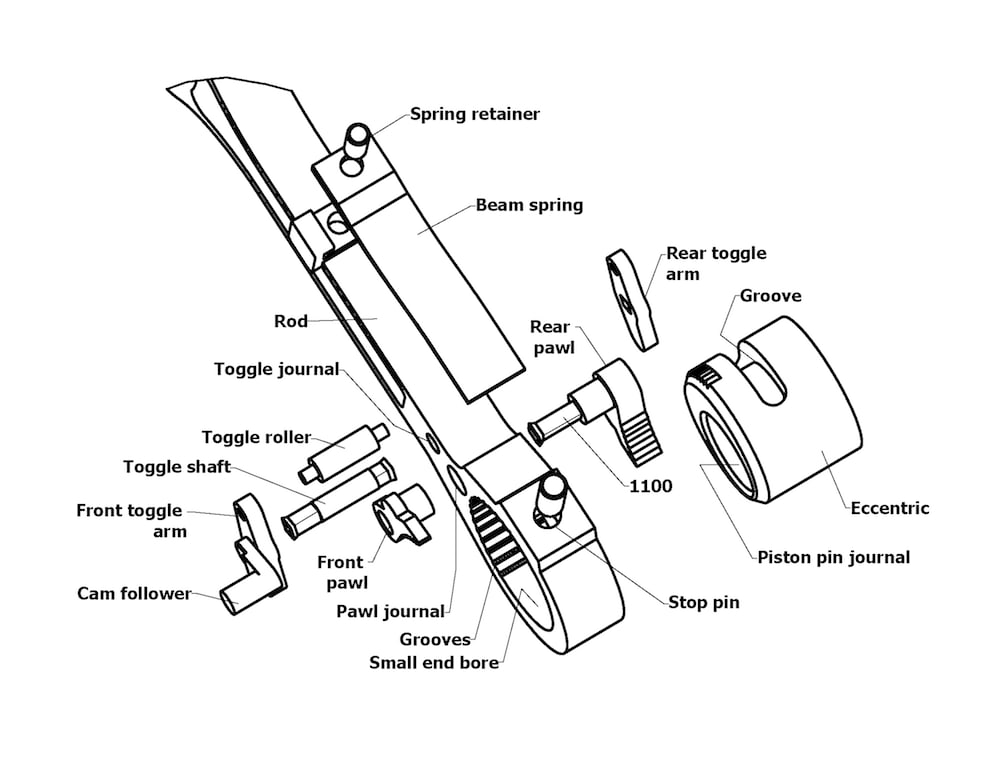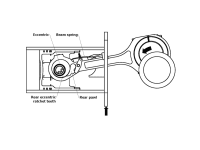Adjustment of the compression ratio in a running piston engine as a function of operating conditions is recognized as an effective way to improve both light load efficiency and maximum output torque, and is perhaps the last major efficiency improvement available to piston engines in the quest to reach the 2025 CAFE standard of 54.5 mpg. The proposed two-stage engine variable length connecting rod provides this function by changing compression in running engines with a simple and robust mechanical device. The design is described in detail in the published PCT patent application WO 2015/2004432 A1. Novelty is shown since the search report in the application indicates no particularly relevant prior art.
The device uses connecting rod force reversals to rotate eccentric bushings to change the connecting rod length without hydraulics or added fluid passages in the crank or rod. Compression ratio changes are initiated by shifting a block-mounted cam such that it engages and flips a bi-stable toggle on the connecting rod. The toggle resets a switchable one-way ratchet clutch mechanism controlling the eccentric rotation. The eccentric then rotates towards the new position during a connecting rod force reversal that causes eccentric torque in the required direction. The clutch mechanism captures incremental rotation in the required direction even if the eccentric does not rotate the full travel in a single connecting rod force reversal cycle. This allows full travel to be accumulated over more than one force reversal cycle, and results in more reliable compression ratio shifting by eliminating the possibility of non-productive cyclic rotation. The clutch mechanism latches the eccentric at the eccentric rotation end point, whereupon the connecting rod acts as a rigid rod. When the clutch direction is switched again, the eccentric is free to rotate in the opposite direction with the same incremental rotation capability. When the clutch direction is switched it maintains its original locking direction until the rod load and resulting torque on the eccentric are at a low level and in the new rotation direction. This pre-set characteristic allows the clutch direction to be switched at one point in the engine cycle, while assuring that the clutch releases at another point in the cycle when the force direction and magnitude are favorable. The block-mounted control cam only engages the bi-stable toggle at the beginning of the change event. During steady state operation there is no interaction between the cam and the rod mechanism, eliminating noise and wear.
The design includes novel configurations of the lubricated journal bearing between the connecting rod and the eccentric that modify the squeeze film bearing effects and resulting friction. These configurations reduce the peak eccentric torque carried by the clutch mechanism while facilitating eccentric rotation at lower torque. The all-mechanical rod assembly is a direct replacement for conventional rods, and requires no changes to the piston, crank and engine lubrication system. The components are only of moderate precision and carry moderate stress.
Like this entry?
-
About the Entrant
- Name:Kirby Meacham
- Type of entry:individual
- Software used for this entry:Autodesk Inventor
- Patent status:pending








